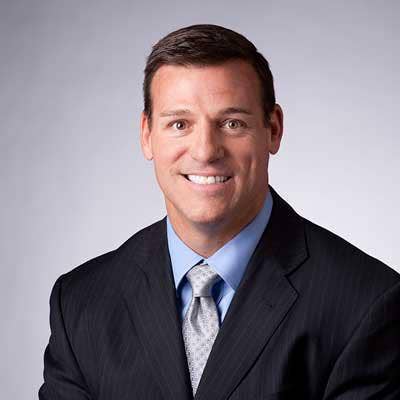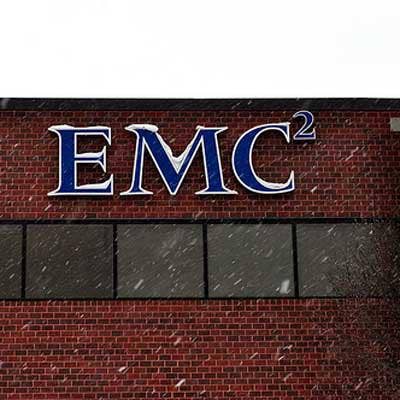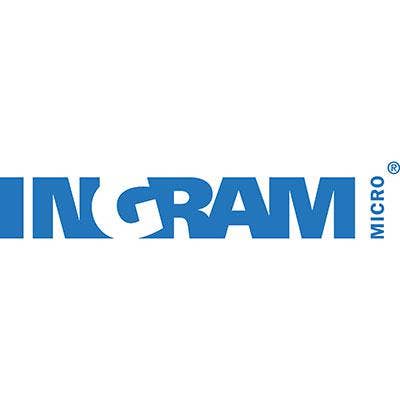Q&A: Ingram Micro President Paul Bay On Cloud, Consolidation And More

One-On-One With Bay
In an interview with CRN at the ONE Ingram Micro event in Las Vegas, Ingram Micro North American President Paul Bay gives his thoughts on the distributor's cloud strategy, consolidation, EMC acquisition rumors and more. Here's what he had to say.

Ingram announced many strategic and product pushes at the event. How do these all tie together under a single strategy?
If you look at that life cycle of technology -- that's where all of those investments are playing in. ... But it starts from the early adopters and things like cloud and complexity and then how you get into mainstream and all the way out to what you'd define as the commercial products, high velocity. ... You go all the way back to the bottom line where you get through taking stuff out from an inventory asset disposition and then us getting visibility into that complete life cycle for our business development center and being able to build out really predictive analytics. ... Within that, you have people who want to go wider, they want to go deeper, and in a number of different ways, whether it's our vendors or our solution providers.

Talk about the vertical markets push. You just added support in the retail and finance verticals.
We're continuing to make investments in areas like around our verticals. We've done a great job really running a good playbook on health care. Obviously, everyone wants to be in health care. It's a great opportunity. But, now we're doing the same thing with retail and finance. We're hiring experts in those areas. We've always talked about how we have true medical doctors as part of our business development team -- we'll do the same thing with finance and retail. We'll run that in a similar way in how we get at those verticals.

What about professional services?
Those were the areas where we made our most significant and where we'll continue to make our most significant investments. ... That's where the partners have relied on us to go out there. ... Then you tie in things like the offering of cloud ... whatever the right business outcome is, we can help enable and support our solution providers and help take out the risk that they have to build these capabilities out themselves. I think that's a key point. There's a risk associated with when you decide as a solution provider that you're going to get into that business, you've got to staff up, skill up and make the investments. They can lean on us to be able to make those investments and take that risk out and allow us to build that entire operation.

When you offer those professional services that touch end users, how do you make sure it's not overlapping with partners? Where do you draw the line?
We're not drawing the line. I would say we're blurring the line. It's really, how do they want us to show up. We can show up as a third-party expert, we can show up as someone that is badged for them as them as the face to the end user. The answer is, though, that we're going to use the channel to help facilitate those services. If we're out touching an end user, it's on behalf of a partner and on behalf of the channel. You should ask partners -- it's been in my opinion very well received once you have the communication of what it is and what it isn't. ... We can help them generate more profit and keep their utilization for their bench and their highly skilled associates. It kind of works both ways.

We were initially hearing a lot of concern around the changes made in April to Ingram's cloud offerings. Is that something you were hearing?
I have not received a lot of negative feedback about anything, except 'tell me more about the opportunity.'

In your opening presentation you talked about the four C's: change, consolidation, consumerization and complexity. Can you talk a little more about what you're seeing there?
We're seeing consolidation or partnering. You can either build it, buy it or partner. We're seeing all three of those from a vendor's perspective. ... [For example,] if I'm not a data center expert today, how do I get into networking virtualization? Those crossovers, as those become closer and closer aligned, more and more people are looking to acquire those skill sets. You'll continue to see that moving up the stack, down the stack and then some of it from a vertical perspective too. ... Another thing is data capture and point of sale and the regulations that are coming in 2015 with the pin and chip technology. Europe is already embracing it and you going to have to from a North American perspective. There's a growing opportunity that's going to come for people in serving that category too.

Speaking of consolidation, what do you think of the news of a possible EMC acquisition?
Here's the thing: Whichever way those chips fall, if they fall, I don't know if they're going to, we're positioned in a great spot to be able to help our channel partners, our solution providers, be able to go deliver that technology. There will continue to be, I call them big bang acquisitions or consolidation, or even down to the smaller ones when you see the big guys buying some of these emerging technologies. That's where we kind of focus around, the emerging technologies, because [our partners] want to know what that next groundswell opportunity is. We're playing at both ends, and whichever way it plays I think we'll be able to help and the partners will be able to lean on us to get through that process.

Do you think consolidation is a good thing?
It depends. I think it depends on how big it is and what technologies are coming through. Sometimes it's a good thing and sometimes it's not necessarily. For us, it's not [much of a difference], because we carry such an end-to-end opportunity. I think it varies for some of the solution providers who may be all in on one technology ... but for the most part there's always going to be emerging vendors that are coming into the technology world also.

Is Ingram a player in consolidation?
We look at again, we look at you can build it, you can buy it, or you can partner. We're having active conversations about how can you build it, how do you partner or how do you buy it. We've put our balance sheet to work over the last couple of years ... spending millions of dollars on 10 acquisitions on a global basis, which Ingram Micro hasn't done [that many] acquisitions in a two-year period probably ever prior to that. We'll continue to be active with where are the opportunities and where do our solution providers need something.

What about complexity? Talk about that.
I think the other C, the complexity, is an important one too because this industry now, if you're a solution provider and you take the time and effort to really understand where those opportunities are, there's really more opportunity now than there's ever been because of that complexity, because of that consolidation, because of that consumerization. [Our role is] helping understand: what is that business outcome to solve for, what are those opportunities? There's multiple ways to solve for a solution and we think we're building out the right to alleviate that risk for those partners to be able to deliver on that complexity that's out there.

With all of these trends, how does it affect Ingram internally? How do you have to realign your business?
We have to continue to build out the people, the process and the tools across the board. ... We launched a new website for our solution providers. We knew we needed to be an easier partner to do business with, with things like automated invoicing. ... We'll continue to build out the right [tools]. As I mentioned, we made the investment in the right people to tie that whole thing together. It's one thing to have the products as a gamble in UCC or data capture point of sale, and we've always had a very long line card, but how do you tie all those together to deliver the right business outcome? That's about bringing in the right people to be able to deliver that message, to make sure you have the right skill sets and authorizations to be able to train people up and deliver on that.

Partners at ONE are talking a lot about the recent rebranding. Can you talk about that?
You don't refresh your brand very often. As we talked about showing up differently and doing lots of things differently, we thought it was time to do that. Ingram Micro, as you can see, it's a very clean logo. It's how we want to brand ourselves. ... Do I think it gives us a competitive advantage? We're in 170 countries on a global basis, 200,000 solution providers, we touch $40 plus billion in revenue. By being the largest and being consistent in the investments to show our brand. You saw the banner that was up in New York City. I know solution providers that are plugging Ingram Micro into their messaging to end users as somebody that's supporting their business as they're going to an end user.

What are the big tech trends for 2015?
I think you're going to continue to see, the areas that I focused on the four Cs, I think those are the big things that you're going to continue to see in the industry going into 2015. How all those things play together -- I can't really make that prediction. What I would tell you is that ... it is going to be exciting. ... We really want to be predictive. It's one thing to talk about what happened and it's one thing to talk about what's going to happen, but when you compile those things together and really predict where the market opportunities are going, we think it's definitely a differentiator that we have the ability to provide that to our solution providers. We want to be that dependable. ... It's [about being] insightful, dependable, agile, in that respect that's everything we want our brand to be.